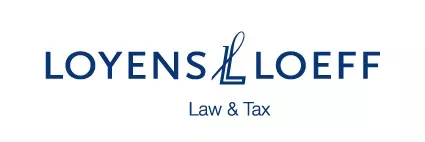- within Finance and Banking topic(s)
- in United States
- within Consumer Protection, Antitrust/Competition Law, Food, Drugs, Healthcare and Life Sciences topic(s)
US Fund Managers (USFM) launching ELTIFs to raise capital from EU HNWIs typically do so either through a Luxembourg Reserved Alternative Investment Fund (RAIF) or a Part 2 UCI. Key differences between RAIFs and Part 2 UCIs that guide the USFM's choice include: (i) investor ticket size, (ii) reporting and compliance, (iii) investors/distributors recognition and (iv) time-to-market.
Investor ticket size
Minimum investment tickets are a key factor. RAIFs with an ELTIF label require a non-waivable minimum investment of EUR 100,000. Conversely, Part 2 UCIs with an ELTIF label may accept smaller tickets - often as low as EUR 10,000 - significantly expanding the eligible investor base.
Reporting and compliance
Part 2 UCIs are authorized and directly supervised by Luxembourg's financial regulator (CSSF) in addition to being subject manager-level supervision under the Alternative Investment Fund Managers Directive (AIFMD). RAIFs, by contrast, are only supervised at the manager-level under the AIFMD. Part 2 UCIs face more extensive reporting and compliance obligations beyond the AIFMD. For example, Part 2 UCIs must meet stricter prospectus requirements.
Investor/distributors recognition
A key commercial distinction is that Part 2 UCIs with an ELTIF label often enjoy greater confidence among both distributors and investors - within the EU and in key non-EU markets - compared to RAIFs with the same label. This is largely due to the additional regulatory obligations imposed by the Part 2 UCI regime.
Time-to-market
RAIFs with an ELTIF label typically launch more quickly than
Part 2 UCIs, as they only require CSSF approval for the ELTIF label
at the fund level. By contrast, Part 2 UCIs are subject to a dual
approval process with the CSSF, simultaneously covering both the
Part 2 UCI regime and the ELTIF label.
Given the similarities to familiar US retail products, broader
distribution potential, and greater recognition among investors and
distributors, many USFMs prefer ELTIFs structured under the Part 2
UCI regime over those using the RAIF regime. However, to balance
time-to-market with investor accessibility, a common approach is to
first launch the ELTIF under the RAIF regime and later seek CSSF
approval to convert it into the Part 2 UCI. This conversion
enhances regulatory access to non-EU HNWIs and broadens commercial
reach by lowering the minimum investment to EUR 10,000.
It is important to note that Part 2 UCIs without the ELTIF label
also provide strong access to EU HNWIs. However, where the
investment strategy permits, distributors increasingly favor
ELTIF-labelled Part 2 UCIs, not only because they come with an EU
marketing passport, but also due to a growing familiarity with the
ELTIF brand among both investors and distributors.
Our next Snippet deals with the most common legal forms used for
ELTIF-labelled RAIFs and Part 2 UCIs.
The content of this article is intended to provide a general guide to the subject matter. Specialist advice should be sought about your specific circumstances.




